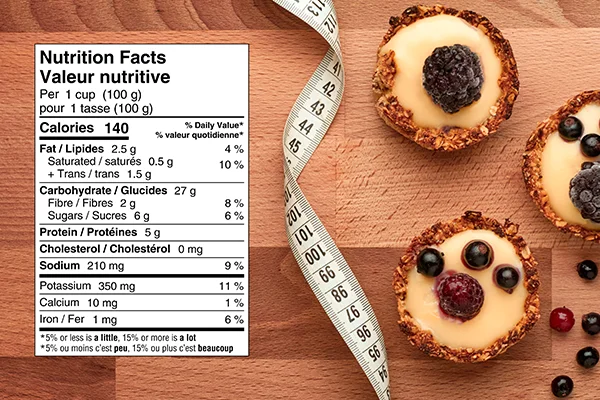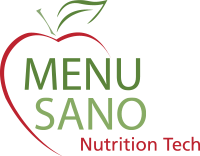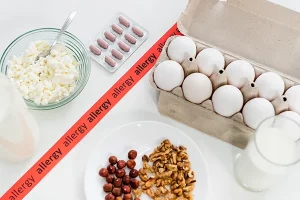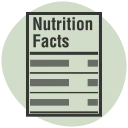Food labels are crucial as they’re a critical source of information for consumers making informed choices about their health and nutrition. The CFIA sets strict guidelines in Canada to ensure that food labels provide accurate and consistent information. Among these guidelines are specific rounding rules that food manufacturers must follow when displaying nutritional values like calories, fat, sodium, and other key nutrients.
These rounding rules balance precision with simplicity, making it easier for consumers to interpret nutritional data while maintaining regulatory compliance. These rules apply to nutritional facts, ingredient lists, and the declaration of values like calories, fats, and vitamins.
Understanding the CFIA Rounding Rules
The CFIA rounding rules are designed to standardize the presentation of nutritional values across all packaged foods. This ensures consumers can compare products effectively and make informed choices. The rules primarily focus on rounding off numeric values to simplify the information without compromising accuracy.
Key Guidelines for Rounding Nutritional Values
Serving of stated size or “Serving Size.”
- Less than 10 g or 10 mL, to the nearest multiple of 0.1 g or 0.1 mL
- 10 g or 10 mL or more, to the nearest multiple of 1 g or 1 mL
- When the serving size is expressed as a fraction, is represented by a numerator and a denominator separated by a line.
- If the information in the Nutrition Facts table of a prepackaged product that contains an assortment of foods is set out as a composite value, the serving size shall include the word “assorted.”
Energy value or “Calories”
- When less than 5 calories can be rounded to 0 or the nearest multiple of 1 Cal depending on the conditions.
- 5 to 50 Calories are rounded to the nearest multiple of 5 Calories.
- More than 50 Calories are rounded to the nearest multiple of 10 Calories.
Fat, Total Fat
- When less than 0.5 g and “free of fat,” it is rounded to 0g. If this is not the case, it is rounded to the nearest multiple of 0.1 g.
- 0.5 g to 5 g, it is rounded to the nearest multiple of 0.5 g.
- When more than 5 g, it is rounded to the nearest multiple of 1 g.
- The percentage is rounded off when the amount is declared as 0 g to 0%. However, it is rounded off to the nearest multiple of 1 % in all other cases.
Saturated fatty acids or Saturated Fat
- When less than 0.5 g, if it meets “free of saturated fatty acids,” it is rounded to 0. If this is not the case, it is rounded to the nearest multiple of 0.1 g.
- 0.5 g to 5 g, it is rounded to the nearest multiple of 0.5 g.
- More than 5 g, it is rounded to the nearest multiple of 1 g.
Trans fatty acids or Trans Fat
- When less than 0.5 g, if it meets “free of trans fatty acids,” it is rounded to 0 g. If this is not the case, it is rounded to the nearest multiple of 0.1 g.
- 0.5 g to 5 g is rounded to the nearest multiple of 0.5 g.
- When more than 5 g, it is rounded to the nearest multiple of 1 g.
The sum of saturated fatty acids and trans fatty acids or “Saturated Fat + Trans Fat.”
- When saturated fatty acids and trans fatty acids are declared as 0 g, the percentage is rounded off to 0%.
- In all other cases, it is rounded to the nearest multiple of 1%.
Cholesterol
- If it is less than 2 mg and meets “free of cholesterol,” it is rounded to 0 mg. In all other cases, it is rounded to the nearest 5 mg.
- The percentage is rounded off when the amount is declared as 0 mg to 0%, and in all other cases, to the nearest multiple of 1%.
Sodium
- If less than 5 mg and meets “free of sodium or salt” then it is rounded to 0 mg. In all other cases, it is rounded to the nearest 1 mg.
- When 5 mg to 140 mg, it is rounded to the nearest multiple of 5 mg.
- When greater than 140 mg, it is rounded to the nearest multiple of 10 mg
- The percentage is rounded off when the amount is declared as 0 mg, to 0%, and in all other cases, to the nearest multiple of 1%.
Carbohydrate, Total Carbohydrate
- Less than 0.5 g, it is rounded to 0 g.
- When 0.5 g or more, it is rounded to the nearest multiple of 1 g.
Fibre, Dietary Fibre
- Less than 0.5 g, it is rounded to 0 g.
- When 0.5 g or more, it is rounded to the nearest multiple of 1 g.
- The percentage is rounded off if the amount is declared as 0 g, to 0% and, in all other cases, to the nearest multiple 1%.
Sugars
- Less than 0.5 g, it is rounded to 0 g.
- 0.5 g or more, it is rounded to the nearest multiple of 1 g.
- The percentage is rounded off if the amount is declared as 0 g, to 0 %, and in all other cases, to the nearest multiple of 1%.
Protein
- When less than 0.5 g, it is rounded to the nearest multiple of 0.1 g.
- When 0.5 g or more, it is rounded to the nearest multiple of 1 g.
Potassium
- When less than 5 mg, it is rounded to 0 mg
- When 5 mg or more and less than 50 mg, it is rounded to the nearest multiple of 10 mg.
- When 50 mg or more and less than 250 mg, it is rounded to the nearest multiple of 25 mg.
- When 250 mg or more, it is rounded to the nearest multiple of 50 mg.
- The percentage is rounded off if the amount is declared as 0 mg, to 0%, and in all other cases, to the nearest multiple of 1%.
Calcium
- When less than 5 mg, it is rounded to 0 mg
- 5 mg or more and less than 50 mg, it is rounded to the nearest multiple of 10 mg
- 50 mg or more and less than 250 mg, it is rounded to the nearest multiple of 25 mg
- 250 mg or more, it is rounded to the nearest multiple of 50 mg
- The percentage is rounded off if the amount is declared as 0 mg, to 0%, and in all other cases, to the nearest multiple of 1%.
Iron, Zinc and Vitamin E
- When less than 0.05 mg, it is rounded to 0 mg.
- 0.05 mg or more and less than 0.5 mg, it is rounded to the nearest multiple of 0.1 mg.
- 0.5 mg or more and less than 2.5 mg, it is rounded to the nearest multiple of 0.25 mg.
- 2.5 mg or more, it is rounded to the nearest multiple of 0.5 mg.
- The percentage is rounded off if the amount is declared as 0 mg, to 0%, and in all other cases, to the nearest multiple of 1%.
Amount of polyunsaturated fatty acids (including Omega 6 and Omega 3) and monounsaturated fatty acids
- Less than 1 g, it is rounded to the nearest multiple of 0.1 g.
- 1 g to 5 g, it is rounded to the nearest multiple of 0.5 g.
- More than 5 g, it is rounded to the nearest multiple of 1 g.
Soluble and insoluble fibre
- Less than 0.5 g, it is rounded to 0 g.
- 0.5 g or more, it is rounded to the nearest multiple of 1 g.
Sugar alcohol, and starch
- Less than 0.5 g, it is rounded to 0 g.
- 0.5 g or more, it is rounded to the nearest multiple of 1 g.
Vitamin A
- When less than 5 µg, it is rounded to 0 µg
- 5 µg or more but less than 50 µg, it is rounded to the nearest multiple of 10 µg
- 50 µg or more but less than 250 µg, it is rounded to the nearest multiple of 50 µg
- 250 µg or more, it is rounded to the nearest multiple of 100 µg
- The percentage is rounded off if the amount is declared as 0 µg, to 0%, and in all other cases, to the nearest multiple of 1%
Vitamin C
- When less than 0.1 mg, it is rounded to 0 mg.
- 0.1 mg or more but less than 1 mg, it is rounded to the nearest multiple of 0.2 mg.
- 1 mg or more but less than 5 mg, it is rounded to the nearest multiple of 0.5 mg.
- 5 mg or more, it is rounded to the nearest multiple of 1 mg.
- The percentage is rounded off if the amount is declared as 0 mg, to 0%, and in all other cases, to the nearest multiple of 1%.
Vitamin D
- When less than 0.1 µg, it is rounded to 0 µg.
- 0.1 µg or more but less than 1 µg, it is rounded to the nearest multiple of 0.2 µg.
- 1 µg or more but less than 5 µg, it is rounded to the nearest multiple of 0.5 µg.
- 5 µg or more, it is rounded to the nearest multiple of 1 µg.
- The percentage is rounded off if the amount is declared as 0 µg, to 0%, and in all other cases, to the nearest multiple of 1%.
Vitamin K
- When less than 0.05 µg, it is rounded to 0 µg.
- 0.05 µg or more but less than 0.5 µg, it is rounded to the nearest multiple of 0.1 µg.
- 0.5 µg or more but less than 2.5 µg, it is rounded to the nearest multiple of 0.25 µg.
- 2.5 µg or more, it is rounded to the nearest multiple of 0.5 µg.
- The percentage is rounded off if the amount is declared as 0 µg, to 0%, and in all other cases, to the nearest multiple of 1%.
Thiamine, riboflavin
- When less than 0.005 mg, it is rounded to 0 mg.
- 0.005 mg or more but less than 0.05 mg, it is rounded to the nearest multiple of 0.01 mg.
- 0.05 mg or more but less than 0.25 mg, it is rounded to the nearest multiple of 0.025 mg.
- 0.25 mg or more, it is rounded to the nearest multiple of 0.05 mg.
- The percentage is rounded off if the amount is declared as 0 mg, to 0%, and in all other cases, to the nearest multiple of 1%.
Magnesium
- When less than 1 mg, it is rounded to 0 mg.
- 1 mg or more but less than 10 mg, it is rounded to the nearest multiple of 2 mg.
- 10 mg or more but less than 50 mg, it is rounded to the nearest multiple of 5 mg.
- 50 mg or more, it is rounded to the nearest multiple of 10 mg.
- The percentage is rounded off if the amount is declared as 0 mg, to 0%, and in all other cases, to the nearest multiple of 1%.
Copper
- When less than 0.0015 mg, it is rounded to 0 mg.
- 0.0015 mg or more but less than 0.025 mg, it is rounded to the nearest multiple of 0.002 mg.
- 0.025 mg or more but less than 0.05 mg, it is rounded to the nearest multiple of 0.005 mg.
- 0.05 mg or more, it is rounded to the nearest multiple of 0.01 mg.
- The percentage is rounded off if the amount is declared as 0 mg, to 0%, and in all other cases, to the nearest multiple of 1%.
Application of CFIA Rounding Rules in Labelling

Why Rounding Rules Matter
The precision and uniformity these rules offer ensure that consumers receive clear, standardized information. Without these guidelines, the nutritional content on food labels could become inconsistent, leading to confusion or potentially misleading data.
Challenges for Food Manufacturers
While these rounding rules benefit consumers, manufacturers must stay vigilant about compliance. Labels need to adhere to the exact rules to avoid discrepancies, fines, or penalties from regulatory bodies. Implementing accurate food analysis techniques is crucial for determining initial values before rounding.
Complexity of Rules
The rounding rules for nutritional values (e.g., calories, fat, sodium) can vary depending on the magnitude of the value (e.g., rounding to the nearest whole number vs. decimal places). Understanding and applying these specific rules for each nutrient can be complex.
Data Accuracy
Manufacturers rely mainly on laboratory testing. That being said, small variations in data may occur due to sampling or testing methods, which can complicate adherence to strict rounding guidelines.
Regulatory Compliance
Ensuring compliance with the CFIA’s rules requires careful monitoring and validation of labels. Non-compliance can lead to product recalls, fines, or reputational damage.
Product Formulation Changes
Adjustments in product formulation, even minor ones, can affect nutrient values and require recalculating and rechecking compliance with rounding rules. This can delay product launches
Costs
Implementing systems, training staff, and conducting frequent audits to ensure compliance with CFIA rules increases operational costs.
Frequent Regulatory Updates
Keeping up with changes in CFIA regulations, including potential updates to rounding rules, requires ongoing investment in training and monitoring.
Using MenuSano for Accurate Labelling
Although the CFIA rounding rules might seem complex, there is a straightforward way to ensure the values on your food labels are correctly rounded. Compliance-focused software solutions can greatly simplify the process for food industry businesses, ensuring accurate and reliable labelling.
Online nutrition analysis tools like MenuSano feature a built-in Rounding Rules Canada Calculator that automatically adjusts all values to align with the specified rules.
This eliminates the need for manual calculations, minimizing the chances of errors and saving time and resources, which can then be redirected to other essential tasks.



















